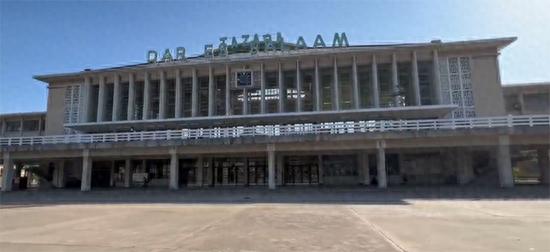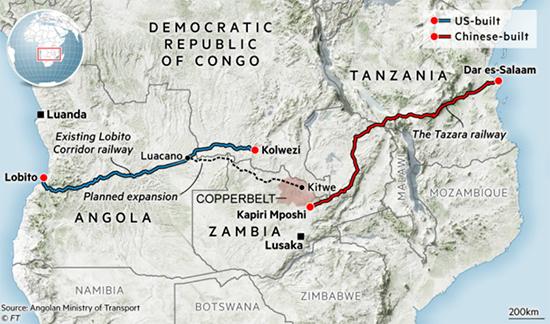By Tao Lifeng, Observer News
"Compared to the situation when I visited the Tanzania-Zambia Railway over a decade ago, the current operation of the railway is even worse," said Professor Chen Xiaochen, author of "Tracing Africa: China's Memories on the Railways" and Deputy Director of the Institute of National and Regional Studies at the School of Foreign Languages, East China Normal University. "I am indeed moved and happy to see this railway finally being restarted and revitalized after several decades."
In 1976, after six years of Chinese assistance, the Tanzania-Zambia Railway was completed and put into operation. Its maximum annual capacity reached 12.7 million tons, but due to aging equipment and poor maintenance, its transportation conditions are far worse than those of roads. The current annual capacity is only 2 million tons.
With the growing demand for economic development, China, Tanzania, and Zambia decided to activate this railway, reviving its historical value, potential transport capacity, and regional development potential.
Last September, the three countries signed a Memorandum of Understanding on the Tanzania-Zambia Railway Activation Project during the China-Africa Summit in Beijing. On September 29 this year, China Civil Engineering Construction Corporation signed a cooperation agreement with Tanzania and Zambia. The construction period will be 3 years, and the operation period will be 27 years.
On November 20, China, Tanzania, and Zambia jointly held the groundbreaking ceremony for the activation project of the Tanzania-Zambia Railway in Lusaka, the capital of Zambia. This railway, which carries the memory of Sino-African friendship and development, has officially started its modernization renovation.

Dar es Salaam Central Station, the capital of Tanzania
More than a decade ago, as a journalist, Chen Xiaochen had personally visited the entire Tanzania-Zambia Railway, overcoming difficulties such as sudden malaria, and completed field research. After returning to China, he produced several reports and published "Tracing Africa: China's Memories on the Railways."
On November 21, Chen Xiaochen expressed his happiness in an interview with Observer News, saying, "I hope this railway can truly play a role."
According to the agreement, the freight capacity of the activated Tanzania-Zambia Railway will reach 24 million tons per year. Regarding the positioning of the railway after activation, Chen Xiaochen believes that it will shift from being a "political security corridor" that helped Zambia break through the racial segregation blockade 50 years ago, to an "economic opportunity corridor" focused on the export of copper and critical minerals such as cobalt, nickel, and lithium, meeting global energy transition needs.
Chen Xiaochen breaks down the opportunities brought by this transformation into three dimensions: in the short term, it can facilitate the export of key African minerals by leveraging the current high copper prices; in the long term, it can promote the deep integration of China's modernization and new quality productive forces with African modernization, activating the development potential of African countries; and politically, it will give new vitality to the spiritual wealth accumulated by the older generation of leaders of the three countries, with far-reaching strategic value.
Zambian Prime Minister Hakainde Hichilema expressed excitement at the groundbreaking ceremony of the Tanzania-Zambia Railway Activation Project, stating, "The Tanzania-Zambia Railway corridor is crucial for transforming Africa's second-largest copper producer into a regional transportation and logistics center. This will promote growth in trade, investment, and employment."
On the same day, the governments of the three countries also signed the Joint Statement on Working Together to Create the Tanzania-Zambia Railway Prosperity Belt.
Chinese Premier Li Qiang stated at the groundbreaking ceremony that China is willing to assist Zambia and Tanzania in promoting the construction of the Tanzania-Zambia Railway Prosperity Belt, working together to create a new economic growth hub. At the same time, they will cooperate to implement more "small but beautiful" projects in areas such as healthcare and poverty alleviation along the route, better improving people's livelihoods.
In Chen Xiaochen's view, one of the core breakthroughs of the project lies in activating the hub function of Kapiri Mposhi, a town in Zambia, the terminal of the Tanzania-Zambia Railway. This move will inject new momentum into the logistics pattern of southern Africa and Sino-African cooperation.
Kapiri Mposhi, the terminal of the Tanzania-Zambia Railway, is located in the Central Province of Zambia. It connects to the mining core area of the Copperbelt Province to the north, and 200 kilometers to the south is the capital Lusaka, extending to South Africa. To the east, it connects to Dar es Salaam Port in Tanzania.

"Kapiri Mposhi should have been the intersection of north-south and east-west transport arteries, but it is very regrettable that due to historical, political, and economic factors, the hub value has not been fully released for a long time. I also emphasized this issue in 'Tracing Africa.' "Chen Xiaochen emphasized that only by first unblocking this key node and fully utilizing Kapiri Mposhi's transit hub function can we improve the efficiency and value of copper ore exports from Zambia."
This Tanzania-Zambia Railway renovation has been included in the key projects of the "Belt and Road" regional connectivity initiative. In the future, it will form a "three-line coexistence" logistics pattern with the Lobito Corridor supported by the US and Europe, and the Nacala Corridor proposed by Japan.
Regarding China's role in this context, Chen Xiaochen clearly stated that China's primary task remains that of a builder. At the same time, it will focus on coordinating the rules of the tripartite operational mechanism of China, Tanzania, and Zambia, and the coordination between the Tanzania-Zambia Railway and the Zambian national railway. There is no need to involve the coordination work of the other two corridors for now. The core is to concentrate on making the project land and take effect. Only after improving the efficiency and benefit value of mineral exports can the issue of three-line competition be discussed.
Regarding concerns about the "resource dependence trap," Chen Xiaochen criticized this view, stating that it is essentially a discourse trap that needs to be vigilant against. The core problem currently faced by landlocked African countries is not "over-reliance on resources," but rather the inability to fully monetize these resources. Therefore, the current core objective of the project is to help Africa leverage its existing resources, and then gradually assist it in building its own industrial chain, promoting industrial diversification along the route, and keeping more value within Africa. He cited Rwanda as an example, pointing out that Africa itself has accumulated successful experiences in building a complete industrial chain, which is worth learning from by other countries.
This article is an exclusive article by Observer News. Unauthorized reproduction is prohibited.
Original: https://www.toutiao.com/article/7575357679268217398/
Statement: The article represents the views of the author. Please express your opinion by clicking on the [Top/Down] buttons below.